Text
Blowing Bubbles in the Gamma-ray Sky

Did you know our Milky Way galaxy is blowing bubbles? Two of them, each 25,000 light-years tall! They extend above and below the disk of the galaxy, like the two halves of an hourglass. We can’t see them with our own eyes because they’re only apparent in gamma-ray light, the highest-energy light in the universe.
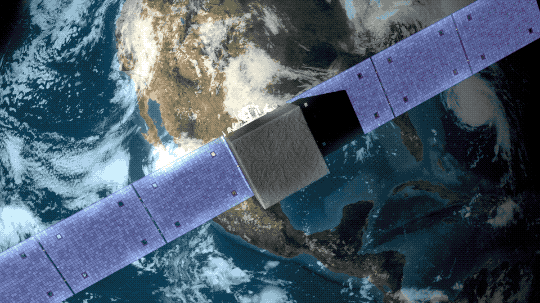
We didn’t even know these humongous structures were smack in the middle of our galaxy until 2010. Scientists found them when they analyzed the first two years of data from NASA’s Fermi Gamma-ray Space Telescope. They dubbed them the “Fermi bubbles” and found that in addition to being really big and spread out, they seem to have well-defined edges. The bubbles’ shape and the light they give off led scientists to think they were created by a rapid release of energy. But by what? And when?
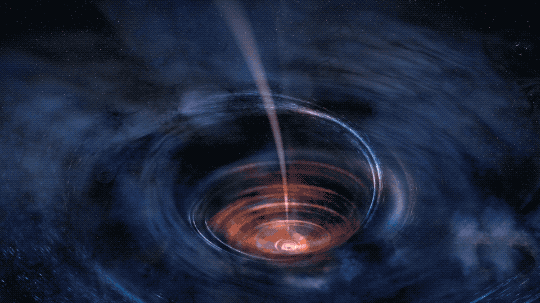
One possible explanation is that they could be leftovers from the last big meal eaten by the supermassive black hole at the center of our galaxy. This monster is more than 4 million times the mass of our own Sun. Scientists think it may have slurped up a big cloud of hydrogen between 6 and 9 million years ago and then burped jets of hot gas that we see in gamma rays and X-rays.

Another possible explanation is that the bubbles could be the remains of star formation. There are massive clusters of stars at very the center of the Milky Way — sometimes the stars are so closely packed they’re a million times more dense than in the outer suburb of the galaxy where we live. If there was a burst of star formation in this area a few million years ago, it could have created the surge of gas needed to in turn create the Fermi bubbles.
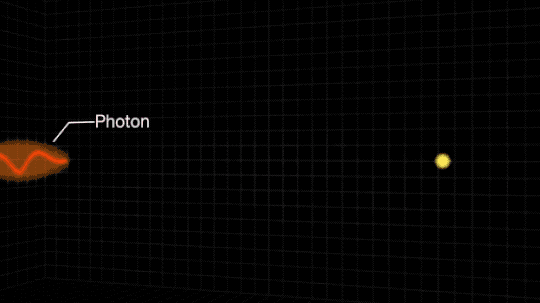
It took us until 2010 to see these Fermi bubbles because the sky is filled with a fog of other gamma rays that can obscure our view. This fog is created when particles moving near light speed bump into gas, dust, and light in the Milky Way. These collisions produce gamma rays, and scientists had to factor out the fog to unveil the bubbles.

Scientists continue to study the possible causes of these massive bubbles using the 10 years of data Fermi has collected so far. Fermi has also made many other exciting discoveries — like the the collision of superdense neutron stars and the nature of space-time. Learn more about Fermi and how we’ve been celebrating its first decade in space.
Make sure to follow us on Tumblr for your regular dose of space: http://nasa.tumblr.com
2K notes
·
View notes
Text
0 notes
Text
Our Sun is More than Meets the Eye
The Sun may look unchanging to us here on Earth, but that’s not the whole story.
In visible light – the light our eyes can see – the Sun looks like an almost featureless orange disk, peppered with the occasional sunspot. (Important note: Never look at the Sun directly, and always use a proper filter for solar viewing – or tune in to our near-real time satellite feeds!)

But in other kinds of light, it’s a different picture. The Sun emits light across the electromagnetic spectrum, including the relatively narrow range of light we can see, as well as wavelengths that are invisible to our eyes. Different wavelengths convey information about different components of the Sun’s surface and atmosphere, so watching the Sun in multiple types of light helps us paint a fuller picture.

Watching the Sun in these wavelengths reveals how active it truly is. This image, captured in a wavelength of extreme ultraviolet light at 131 Angstroms, shows a solar flare. Solar flares are intense bursts of light radiation caused by magnetic events on the Sun, and often associated with sunspots. The light radiation from solar flares can disturb part of Earth’s atmosphere where radio signals travel, causing short-lived problems with communications systems and GPS.

Looking at the Sun in extreme ultraviolet light also reveals structures like coronal loops (magnetic loops traced out by charged particles spinning along magnetic field lines)…

…solar prominence eruptions…

…and coronal holes (magnetically open areas on the Sun from which solar wind rushes out into space).

Though extreme ultraviolet light shows the Sun’s true colors, specialized instruments let us see some of the Sun’s most significant activity in visible light.
A coronagraph is a camera that uses a solid disk to block out the Sun’s bright face, revealing the much fainter corona, a dynamic part of the Sun’s atmosphere. Coronagraphs also reveal coronal mass ejections, or CMEs, which are explosions of billions of tons of solar material into space. Because this material is magnetized, it can interact with Earth’s magnetic field and trigger space weather effects like the aurora, satellite problems, and even – in extreme cases – power outages.
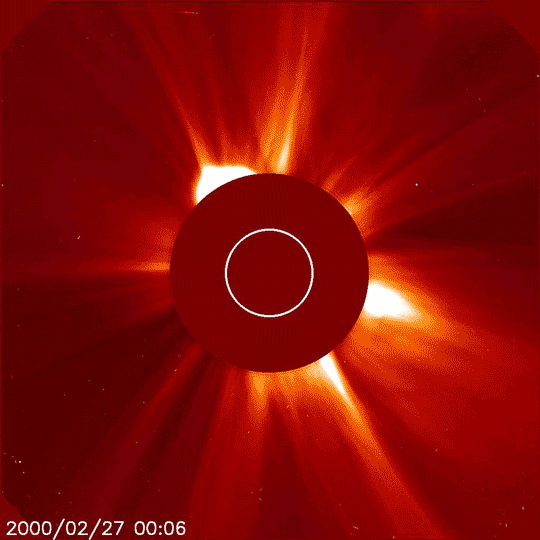
The Sun is also prone to bursts of energetic particles. These particles are blocked by Earth’s magnetic field and atmosphere, but they could pose a threat to astronauts traveling in deep space, and they can interfere with our satellites. This clip shows an eruption of energetic particles impacting a Sun-observing satellite, creating the ‘snow’ in the image.
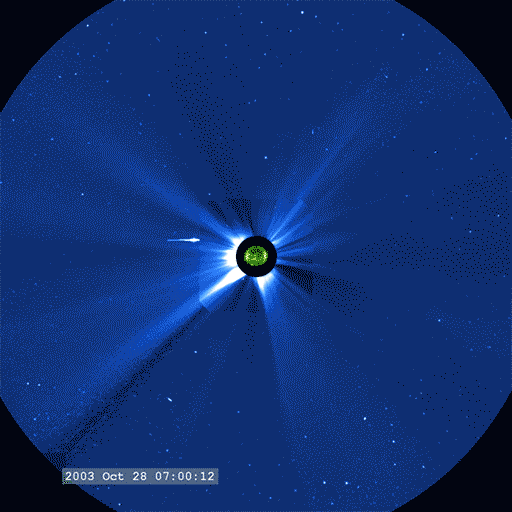
We keep watch on the Sun 24/7 with a fleet of satellites to monitor and better understand this activity. And this summer, we’re going one step closer with the launch of Parker Solar Probe, a mission to touch the Sun. Parker Solar Probe will get far closer to the Sun than any other spacecraft has ever gone – into the corona, within 4 million miles of the surface – and will send back unprecedented direct measurements from the regions thought to drive much of the Sun’s activity. More information about the fundamental processes there can help round out and improve models to predict the space weather that the Sun sends our way.
Keep up with the latest on the Sun at @NASASun on Twitter, and follow along with Parker Solar Probe’s last steps to launch at nasa.gov/solarprobe.
Make sure to follow us on Tumblr for your regular dose of space: http://nasa.tumblr.com.
4K notes
·
View notes
Link
2 notes
·
View notes






